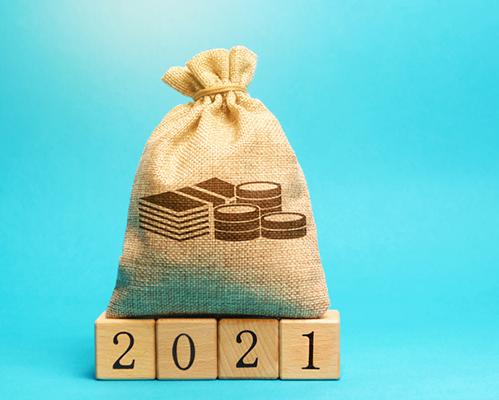4 Retail Price and Promotion Predictions for 2021
After a turbulent 2020, retailers understandably might be hoping that Santa will bring them a calm and orderly 2021. Unfortunately, signs do not point in that direction.
While no single source can accurately predict exactly what will happen, one thing is certain: Science-based pricing, promotions and markdowns will be more critical than ever as we navigate through this second wave of a global pandemic that appears to be even more disruptive than the first wave.
1. Price is King – and You Can't Afford to Get it Wrong
A DemandTec-commissioned global study surveying shoppers in Brazil, France, Germany, the U.K. and the U.S. revealed heightened price sensitivity as the pandemic spreads, bringing the imperative for fair, competitive and sustainable pricing into sharp focus. Thirty-four percent of shoppers surveyed ranked price as the most important factor contributing to their overall shopping experience, far outpacing second-and third-ranked product quality (28%) and product availability (18%).
With COVID-19 again on the rise, economic uncertainty and its tendency to increase shopper price sensitivity will only grow more acute in 2021.
Price is also the No. 1 factor in where shoppers choose to shop and whether or not they will convert. Getting your pricing right isn't optional in today's pandemic-stricken retail environment where price sensitivity continues to grow. Optimally pricing your full assortment has never been more important.
Additionally, it's imperative retailers do not make any missteps when it comes to Key Value Items (KVIs). Get these wrong and it won't matter how optimally priced the rest of the assortment is, as KVIs is that handful of products that drives close to 50% of a shoppers' price perception of you.
As shoppers cope with being homebound, stock-out driven by supply chain disruptions and tight budgets, KVI items have moved from the comfortable world of well-known and stable to now dynamically shifting from week to week. Retailers increasingly lean on productized science to identify current KVIs in real-time so they can prioritize price updates where it matters most to shoppers.
2. Shoppers Who Flocked Online Will Stay There
Retail historically lagged many other sectors, such as travel and hospitality, in seeing shoppers shift to online channels in significant numbers. The pandemic created a sharp inflection point: the study showed that 35% of shoppers had made online their primary shopping channel and most plan to continue shopping online post-COVID – up from around 7% pre-pandemic, or an astounding 5x increase.
Earlier research established that, contrary to widely held industry assumptions, shoppers have different expectations for online vs. in-store prices, with shoppers generally expecting lower prices in online channels — with the notable exception of grocery, where they expect lower prices in-store.
In addition to leverage science to understand and meet shopper price expectations by item and channel, savvy retailers also use promotion optimization science to craft offers that are meaningful and engaging to shoppers in the channel of their choice. The days of a grocer relying primarily on an in-store flyer are fast fading when shoppers flock to delivery or curbside pickup channels.
The study even revealed a change in what types of offers shoppers prefer — traditionally buy-one-get-one (BOGO) offer preferences trailed behind dollars-off and % off. However, the global study saw BOGO rising to the top as the preferred offer for 54% of shoppers, followed by dollars-off (52%) and % off (48%). Successful retailers leverage technology to stay current with shoppers' changing promotional preferences to ensure they offer the most relevant promotions and types at the right price, and that will also meet their business goals.
3. Private Label Offerings — and Prices — are Increasingly Important
With price and quality having been identified as the two most important factors for shoppers, it's hardly surprising that their embrace of private label ticked up in 2020 and is likely to increase even more in 2021. The study, which took place in late summer of 2020, found that shoppers were spending 7% more on private label than they did pre-COVID. Earlier doubts about the quality of private label fell away as price sensitivity and supply chain disruptions led many shoppers to try private label rather than their go-to major brands. In 2021, retailers have the optimal opportunity to revisit their private label product mix and find that surgical price point that attracts and retains shopper while preserving the margin advantage opportunity presented by the private label model.
4. A Tough Road Ahead
As we move into the depths of winter and another wave of pandemic, retailers face a long, tough road ahead. As lockdowns, restrictions and economic hardship persist, many businesses will inevitably fail.
Retailers recognize that they have no room for error — they must get prices right in order to survive. Fortunately, widely deployed science-based solutions leverage real-time insights into shopper price sensitivity, down to the item-store level, as well as competitive elasticity, to help retailers price and promote effectively on the items that matter most to shoppers while recovering margin elsewhere in the assortment to sustain overall margins.
Cheryl Sullivan is president of DemandTec by Acoustic.



ea92.jpg)